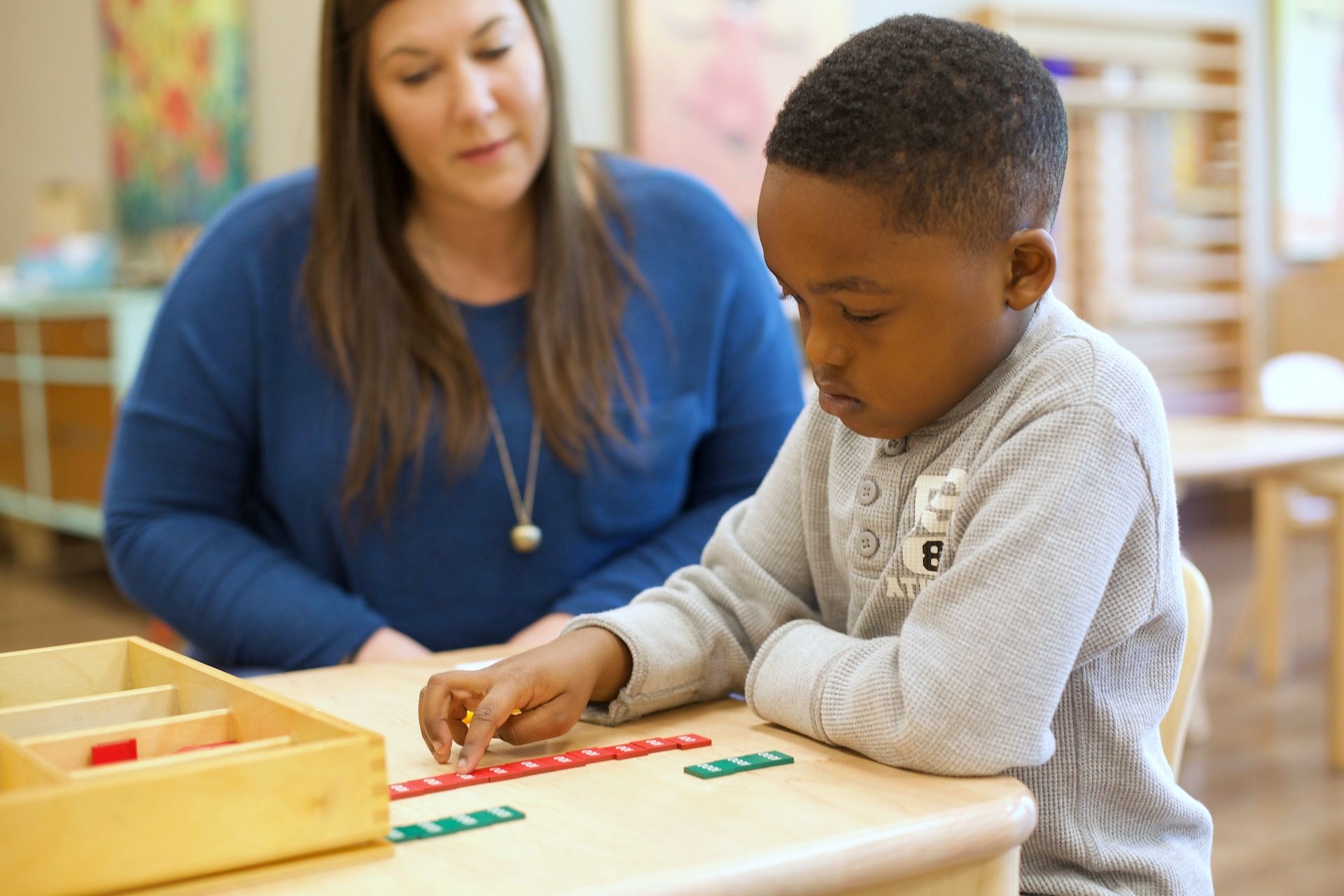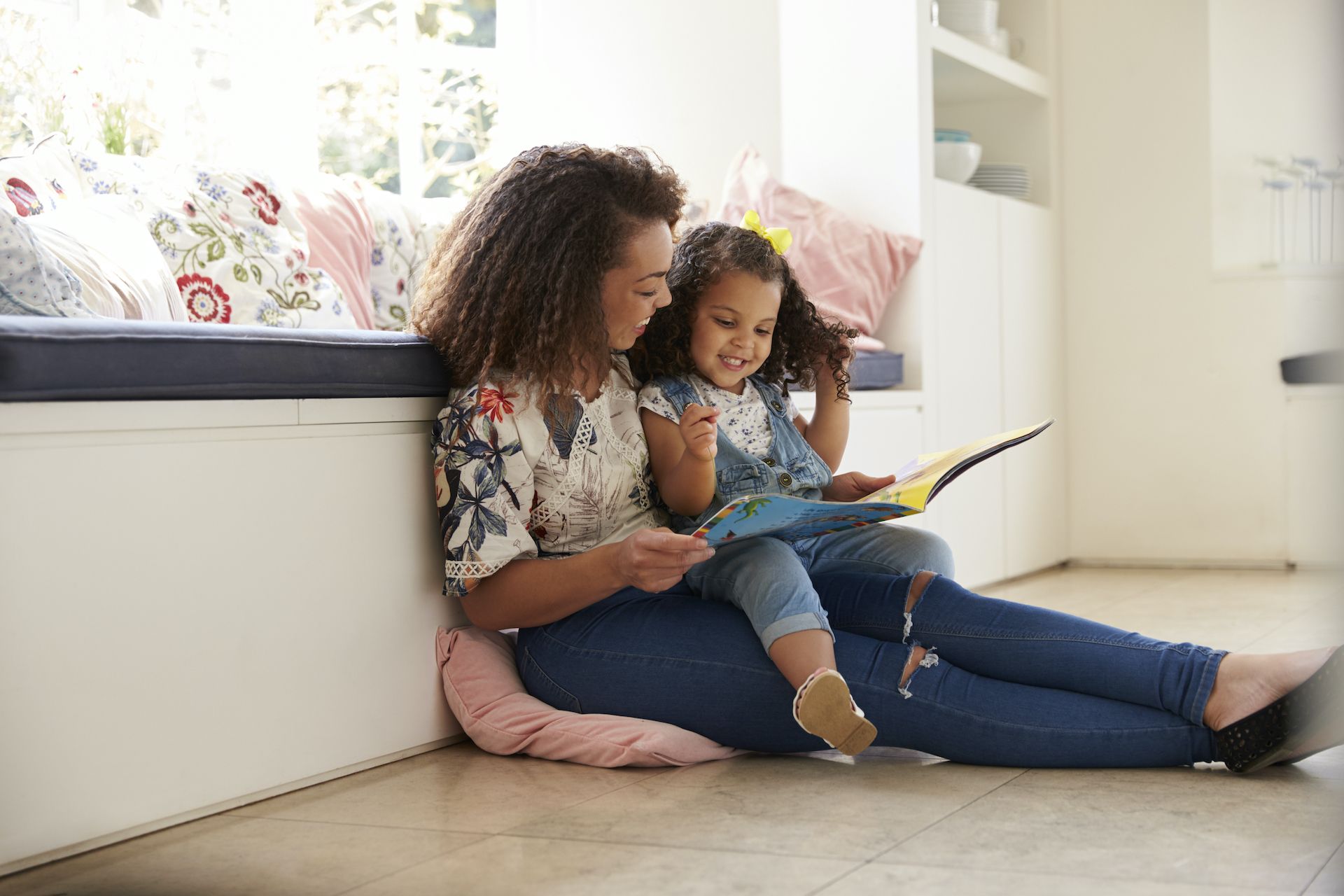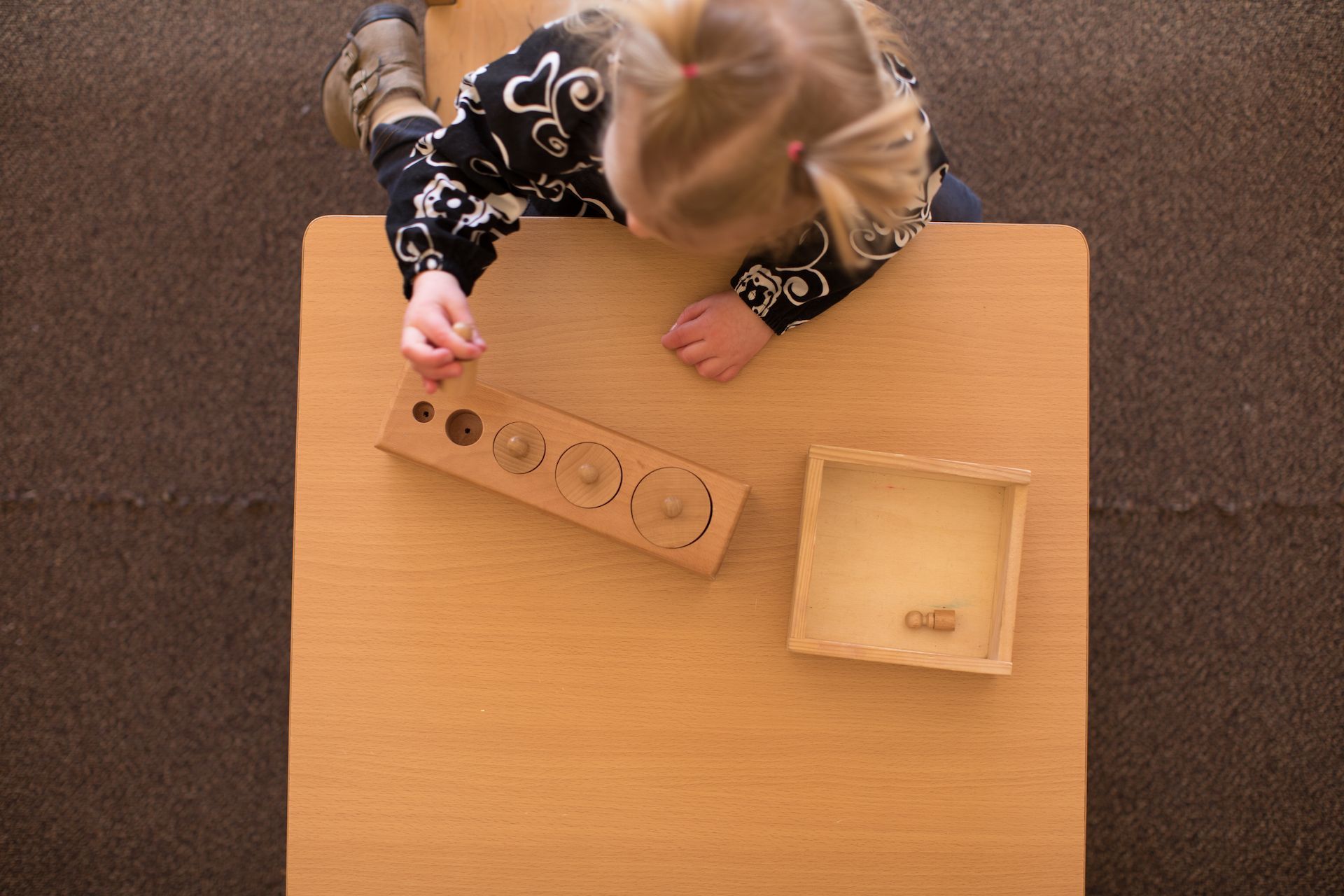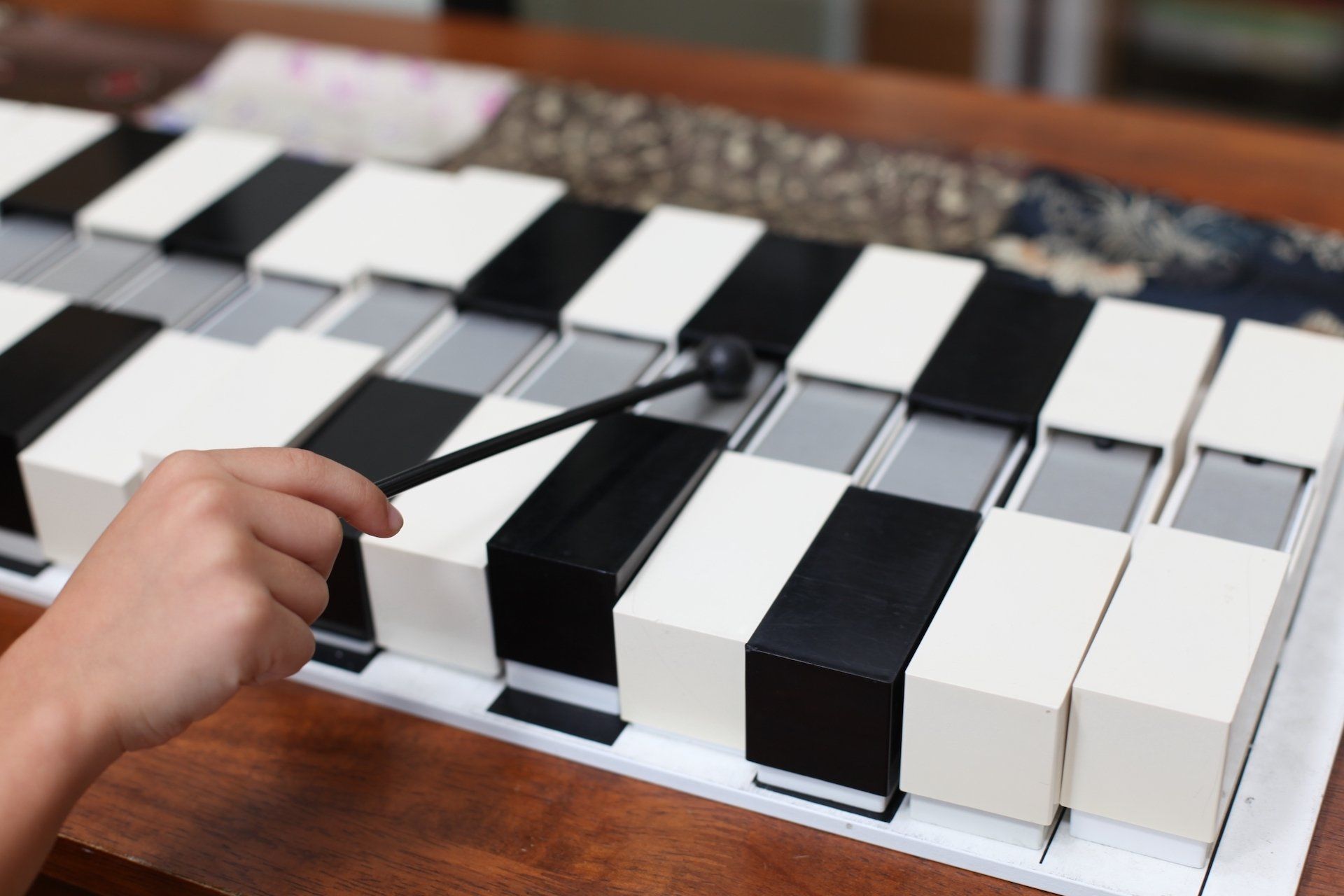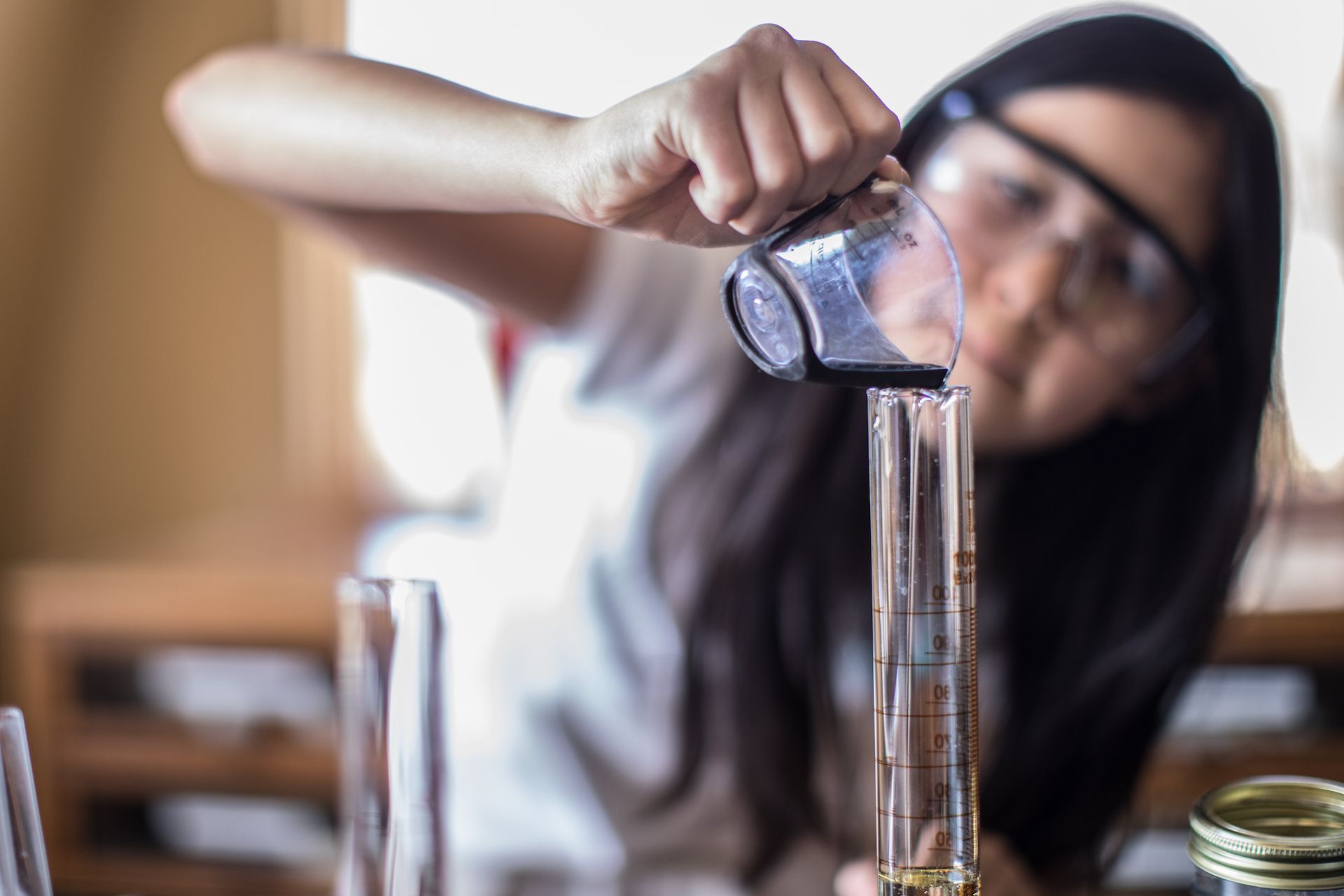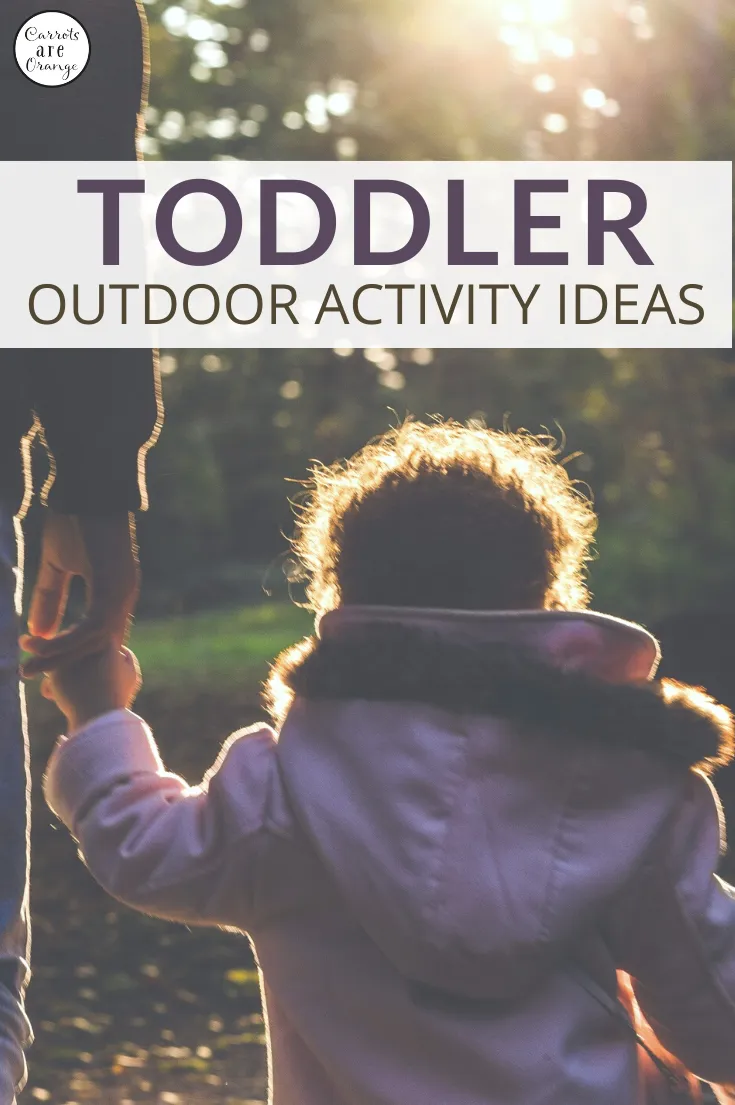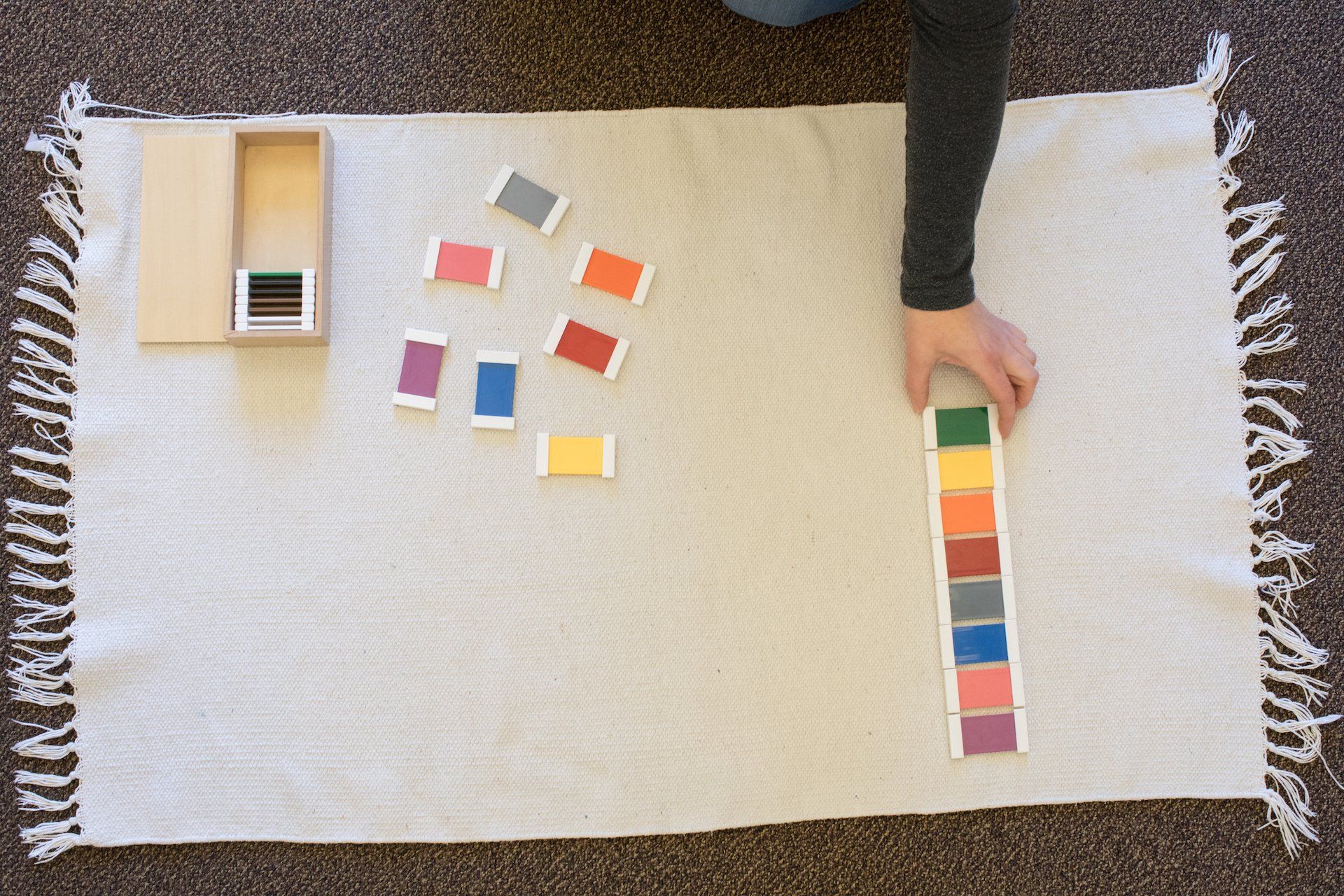Practical Life: From Hand Washing to Entrepreneurship
Montessori Thrive • December 9, 2020

Practical life is one of Montessori education's core components, and it’s one of the vital elements that make it stand out from other models. The work comes in a variety of forms, too. Guides give direct lessons, children are afforded time and space to practice, and much of the learning is built authentically into the daily routine.
What practical life looks like throughout the different stages of childhood is where things get interesting. Read on to learn a bit about the skills we teach at various ages and how you might implement the practice at home with your own child.
Toddler environments
- Food tasting - In lieu of a traditional snack time, many toddler classrooms include tasting opportunities. This includes a formal sit down with all the children at a table and incorporates teaching children how to pass serving dishes or serve one another. The fun and routine of regular food tasting allows toddlers to try a variety of foods and flavors that they may not have otherwise.
- Table setting - To prepare for food tasting, children take turns helping to set the table. This is a skill that toddlers are fully capable of (with a bit of guidance) and allows them to contribute to the group while building a sense of confidence.
- Window washing - The funny thing about young children is they love to clean. For adults, a task like washing windows is just one more tedious item to check off the list; for kids it’s an exciting new adventure that makes them feel grown-up. Toddler guides provide children with the necessary tools, they give a brief lesson, and allow the children to practice.
- Sweeping - As you might imagine, there are plenty of spills in any classroom! One of the first ways many Montessori guides teach children to sweep is to tape off a small square on the floor. Children are meant to sweep debris into the square to make it easier to then collect with a dustpan and brush. This is something you can try at home, too.
- Folding napkins - Folding laundry may seem like an endless task, but when your toddlers want to help, let them! Small, square items, like napkins, washcloths, and dish towels, are perfect for small hands to practice with. Demonstrate wordlessly with one or two, then give them a pile to work on. You will be amazed at their intense focus and ability.
- Handwashing - There are specific Montessori lessons to teach a child to wash their hands. This is an especially important skill for them to master now, and parents can easily demonstrate and guide children through the steps at home as well.
- Pouring activities - The opportunities for pouring are endless. Montessori environments may provide children with small trays complete with prepared pouring activities. This may include a small pitcher and a bowl that water can be transferred between.
- Plant care - With guidance, toddlers may begin to learn about basic plant care, including watering.
- Basic organization - We believe it’s important to teach children organization right from the start, and children in the first plane of development have finely tuned sense of order, which makes this great timing. When a child arrives in the morning, they are responsible for hanging their coat on their designated hook. If a child takes a work off a shelf, we teach them how to return it to its proper spot.
- Putting on and taking off one’s coat and shoes - Basic self care is important, and another great opportunity to nurture independence. It may take some time and practice, but toddler guides teach and encourage children to put on and take off their own shoes and coats. Want to try this at home? Check out this great video of the “Montessori coat flip.”
Primary environments
- Controlled walking - Refinement of gross motor skills is one important area primary children work on throughout the course of their three-year cycle. Montessori guides may tape a circle onto the floor for children to walk on. As a challenging extension, students may hold a bell while walking, with the goal of not allowing it to ring.
- Carrying items - It’s important to teach children how to carry items properly, whether that be a tray of work, a glass of water, or even a chair safely across the room.
- Transfer work - Small trays of transfer work can be found on the shelves of any primary classroom. Children work on their fine motor skills by moving small objects (pom poms, beads, stones) from one bowl or container to another using various tools (tongs, spoons, etc.).
- Using tools - From kitchen tools like whisks and apple slicers, to handy tools like screwdrivers and hammers, primary-aged children have the opportunity to try out and master a wide variety.
- Pouring activities - Much like in the toddler environment, primary children work with pouring activities. Rice is often used, as well as water, and cleaning up spills is a part of the work.
- Rolling mats - Montessori children use work mats to define their space (both for themselves and their classmates). Learning how to properly roll and store these mats makes them neat and available to the next child.
- Plant care - A continuation of the toddler work, children in the primary classroom learn how to water plants, as well as dust their leaves and ensure proper sunlight. They may even have opportunities to garden with their class.
- Cleaning the classroom environment - Children aged 3-6 are still primed with a sense of order, and they delight in assisting in cleaning the classroom environment. Using real mops, brooms, and sponges, they are given lessons and ample time to practice.
- Handwashing - Again, a continuation of the work in the toddler classroom, primary students are taught how to carefully and effectively wash their hands.
- Dressing frames - These lovely Montessori materials consist of a wooden frame with fabric and various types of fasteners. One frame teaches children to button, while another allows for practice zippering, using hooks and eyes, buckling, lacing, tying, and more.
- Food preparation - There are so many skills to be taught in the kitchen (and classroom!). Children typically start with cutting and slicing, then move on to spreading, stirring and mixing, peeling, juicing, and preparing basic multi-step snacks.
- Grace and courtesy - We believe that caring for one another is a big part of our basic practical life skillset. We teach our students how to greet one another, how to have appropriate conversations, and how to welcome a guest into the classroom.
Elementary environments
- Food preparation - Food prep is often seen as a staple of the primary environment, but it should (and does) continue well beyond. Different schools and teachers approach this work differently, however, and it can take on so many forms. Some classes make a treat for each child’s birthday, while others prepare meals for special occasions, or even weekly.
- Meal preparation - Beyond the act of chopping and cooking, many Montessori elementary students are able to experience the work that comes beforehand, including recipe selection and shopping for ingredients within a budget.
- Cleaning the classroom environment - The glorious sense of order that graces the first plane quickly dissolves when children enter their elementary years. This means there are plenty of messes to clean up, and lots of opportunities to teach children how to do so. Working clean-up time into the regular routine is one way we foster a sense of responsibility in our students.
- Plant and animal care - Elementary children continue to assist with plant care as they did in the primary years, yet this is often extended to assisting the guides with caring for any class pets. This is often done on a rotating basis, as most children are enamored with animals and jobs that involve their care are quite coveted!
- Handwork - It is during the elementary years that children discover the calming nature of handwork. What often begins with simple finger knitting can take on a wide variety of forms. Children in a Montessori class can often be seen engaging in these types of activities during read alouds, when they complete their work, or when they need a moment to calm and/or center themselves.
- Community service - During the second plane of development children are able to see the world beyond themselves. They begin to contemplate society and their role within it, while also harboring a deep sense of justice and fairness. This makes it the perfect time to introduce service learning. Service projects are best formulated by allowing the students to drive the mission with adults serving as guides who help out with logistics.
- Grace and courtesy - As children age, grace and courtesy becomes more about how to interact with others on a deeper level. School-aged children have a strong desire to socialize, but they still have a lot to learn about how to do so with grace. We can help - by teaching skills like conflict resolution, and by reading stories about children who encounter typical social situations, priming them for discussions that create solutions.
- Going out - Elementary children are ready to engage with the larger community. By allowing them to plan trips that are related to their studies or areas of interests, a whole host of skills can be taught, including phone etiquette, taking public transportation, and how to behave in different settings and speak with different people. Beyond the scope of the traditional ‘field trip’, going out involves the development of critical life skills.
Adolescent environments
- Business management - The Montessori adolescent environment is centered on the students working together to run a business. Their multiple years in the community mean they have opportunities to try out a wide variety of roles, too. While the traditional business is a working farm, many Montessori schools have adapted the concept to meet their own local needs.
- Financial responsibility - Running a business includes making purchasing decisions, setting cost prices, and creating enough revenue to stay afloat. Montessori adolescents are able to have valuable practice making financial decisions before they ever leave for college.
- Independent interactions with community members - Teens are social creatures, and Montessori programs allow them to develop connections with their larger community. Their work includes reaching out to and planning with other adults and businesses in the local community, giving them experience that will help them succeed in the future and be contributing members of their communities.
- Meal planning, preparation, and food service - Whether this work is a part of their business or simply regular preparation of meals for one another, middle- and high-school Montessori students are able to have hands-on experience creating and serving meals to others. This will prepare them to learn healthy eating habits and nurture an appreciation for culinary arts.
- Agricultural skills - Whether a Montessori adolescent program runs a full farm or a CSA for micro-greens, their work incorporates botany and an understanding of local agriculture. At the very least, this gives them an understanding and new connection to their larger food system.
Please note that the skills we have listed for each age group are far from exhaustive. These are just a few of the highlights! We hope you have found this article informative, and maybe even inspiring.

Montessori education is a “whole child” approach to teaching that encompasses all areas of child development—cognitive, emotional, social, and physical. It encourages children and adolescents to learn at their own pace in an environment that fosters independence, problem-solving, creativity, and collaboration. That said, parents may find that Montessori schools do things a little differently than traditional schools. This is not right or wrong; it is simply a different way of encouraging children to learn, and one that may or may not be the ideal fit for your family. Let’s look at the questions from our quiz and which answers resonate most with Montessori parents. This will give you a better understanding of the Montessori classroom so you can decide if it is right for your child. 1. Children learn best when they are: Given rewards, like stickers Connected with internal motivation and interests We believe learning should be an exciting and joyful experience for children—something they choose to do without the expectation of rewards for academic outcome, participation, or cooperation. Instead of stickers or other prizes, the reward a child gets from the Montessori classroom is the self-assuredness that comes from reaching a new level of independence or learning a new skill. 2. I am choosing a school to: Prepare my child for a traditional kindergarten Prepare my child academically, socially, and emotionally for school and life Montessori education is more about preparing children to become thoughtful and well-adjusted adults and less about making sure they advance to the next grade or academic level. This is achieved by creating a consistent pathway for learning that begins as early as infancy and carries through to elementary education and even beyond. Therefore, it does not make sense to enroll your child in a Montessori Primary program, for example, if you intend to transfer them to a traditional kindergarten classroom the following year. 3. When considering education, I: Am open to learning about all methods and want to find one that is the best match for my child Believe traditional methods are the best option Some parents prefer the structure and familiarity of a traditional classroom setting. This is absolutely fine. However, because children tend to learn in different ways and at different paces, they often benefit from being in an environment that allows them to learn in the way that works best for them. The Montessori classroom is a great example. A parent whose child may thrive in a Montessori school setting is one who believes in giving their child the freedom to make choices and guide their own learning journey in an environment that fosters imagination and independent thinking. 4. My child learns best when in an environment that is: Orderly, bright, and peaceful Noisy and full of visual stimulation You will notice that Montessori classrooms have a calm, inviting atmosphere that tends to be quieter than walking into, say, a typical elementary school classroom; there are a couple reasons for this. First, because Montessori students are given the freedom to choose their own activities, they are more likely to be fully engrossed in those activities and less likely to be asking the teacher for direction. Children move at their own pace throughout the classroom, and teachers are there primarily to ensure children are engaged and learning. Second, because quieter environments have been shown to foster quality learning, Montessori students are encouraged to speak softly with each other and with their teachers. In this way, they learn to respect those around them and promote a positive learning environment. 5. The most important outcome for my child is to: Be prepared to achieve in elementary school and beyond Be a happy, well-adjusted, and self-motivated human being Again, the Montessori method of education places a greater emphasis on self-paced, independent learning over making sure children advance to the next grade or academic level. We believe learning should be an enjoyable experience that encourages children to work beside and respect one another while at the same time developing their individual personalities and unique talents. 6. The ideal school schedule for my child would be: A few hours a couple of days a week A consistent schedule 5 days a week The Montessori program is thoughtfully structured to help children maximize their potential in an environment where they feel content and well adjusted, and a big part of that comes from consistency. Children thrive on routines and knowing what to expect each day, which is why families who can commit to a consistent, 5-day-a-week schedule are those who benefit most from a Montessori education. 7. It is important that your child completes worksheets and memorizes facts at school. True False Although often used in traditional school settings, worksheets and similar memorization and repetition tools are rarely (if ever) used in the Montessori classroom. We believe children learn more effectively through hands-on experience and independent exploration rather than regurgitating facts onto a sheet of paper. Students are also more likely to retain important concepts when they are able to apply them to different situations and test their validity for themselves. 8. You want your child to: Learn at their own pace and be challenged according to their unique ability Learn according to a curriculum based upon their age In a traditional education setting, parents are often told that a child is not “reading at their level” or that they should be “further along by now” in a certain subject or task because of their age. In the Montessori classroom, children are encouraged to learn at their own pace and given the time and space necessary to fully understand each concept. Children naturally want to learn and understand things, and giving them the freedom and the opportunity to do so is the key to helping them achieve their learning goals. 9. I want my child to be in an environment that: Encourages them to explore their interests, without interruption Has an external curriculum taught at specific intervals each day While traditional classrooms are very structured in terms of time (e.g. 30 minutes each day for Math, 30 minutes each day for Reading, etc.) the Montessori classroom is not. Instead, children can choose which activities they want to participate in and for how long, so as not to interrupt the learning and exploration process. 10. At school and home, I want my child to learn to be: Independent and do things for themselves To rely on adults for everyday life skills One of the primary goals of the Montessori method is to teach children to think and do things for themselves instead of relying on adults for everything. In the words of the American Montessori Society, “Given the freedom and support to question, probe deeply, and make connections, Montessori students grow up to be confident, enthusiastic, and self-directed learners and citizens, accountable to both themselves and their community.” Montessori students learn at their own pace through observation, exploration, and experimentation. Although it is the perfect fit for many families, it is not the perfect fit for all families. If you are interested in learning more about Montessori education and its unique benefits, we encourage you to schedule a tour or visit our blog to learn more.The body content of your post goes here. To edit this text, click on it and delete this default text and start typing your own or paste your own from a different source.
